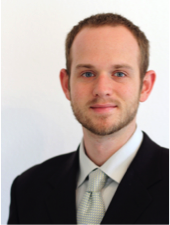
Date:
Location:
Title:
abstract
Few aspects are as prevalent and important to energy conversion and storage as the dimension control of porous nanomaterial architectures. The study of nanostructure-dependent electrochemical behavior, however, has been broadly limited by access to well-defined nanomaterials with independent control over the pore and wall dimensions. This historic limitation is partially due to an overreliance upon dynamic self-assembly processes that are subject to the “tyranny of the equilibrium.” We have developed a kinetically controlled approach as a new nanofabrication tool kit. Kinetic control is historically difficult to reproduce, a challenge that we have resolved with switchable micelle entrapment to yield reproducible and homogeneous nanomaterial series that follow model predictions. This approach enables seamless access from meso-to-macroporous materials with unprecedented ~2 Å precision of tuning, commensurate with the underlying atomic dimensions. This precision and independent control of architectures also opens new opportunities for nano-optimized devices.
1) Lokupitiya, H. N.; Jones, A.; Reid, B.; Guldin, S.; Stefik M.* Ordered Mesoporous to Macroporous Oxides with Tunable Isomorphic Architectures – Solution Criteria for Persistent Micelle Templates. Chemistry of Materials 2016, 28(6), 1653-1667.
2) Lokupitiya, H. N.; Stefik, M.* Cavitation-Enabled Rapid and Tunable Evolution of High-χN Micelles as Templates for Ordered Mesoporous Oxides. Nanoscale 2017, 9, 1393-1397.
3) Peters, K.; Lokupitiya, H. N.; Sarauli, D.; Labs, M.; Pribil, M.; Rathousky, J.; Kuhn, A.; Leister*, D.;
Stefik, M.*; Fattakhova-Rohfling, D.* Nanostructured Antimony-Doped Tin Oxide Layers with Tunable Pore Architectures as Versatile Transparent Current Collectors for Biophotovoltaics. Advanced Functional Materials 2016, 26, 6682–6692.
4) Sarkar, A.; Stefik, M.* How to Make Persistent Micelle Templates in 24 Hours and Know It using X-ray Scattering. Journal of Materials Chemistry A 2017, 5, 11840-11853.
bio
Morgan Stefik obtained a B.E. in Materials Engineering from Cal Poly SLO in 2005 and a Ph.D. in Materials Science from Cornell University in 2010. After two years of postdoctoral research at École Polytechnique Fédérale de Lausanne, he joined the University of South Carolina in 2013 as an Assistant Professor in the Department of Chemistry and Biochemistry. He won an NSF-CAREER award in 2018 and is the founding director of the South Carolina SAXS Collaborative, a NSF-MRI supported facility. He was also recognized as a Breakthrough Star by USC in 2018 and was highlighted as a “rising star of materials chemistry” by RSC in 2017.
Hosted by Chris Bates. Download event flyer.



